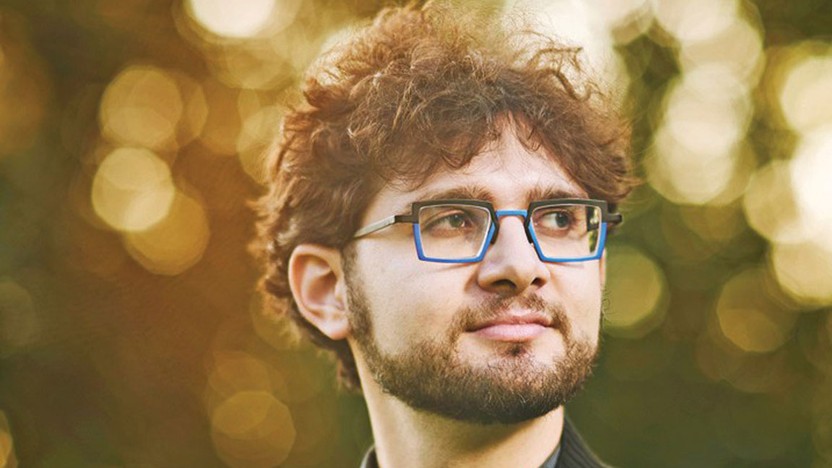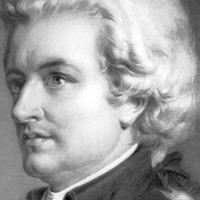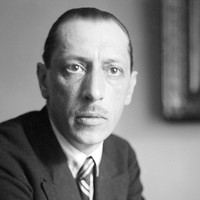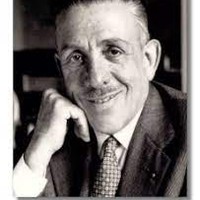Roman Rabinovich Plays Mozart’s Piano Concerto No. 20



Growing up in the small Austrian city of Salzburg, Wolfgang Amadeus Mozart forged a lasting friendship with Joseph Leutgeb, a longtime horn player in the local archbishop’s court orchestra. When Leutgeb moved to Vienna in 1777, Mozart’s father Leopold lent him some money; during the financial struggles that clouded the end of Mozart’s life, Leutgeb returned the favor.
Their bond was cemented in a series of works that Mozart wrote after his own ambitious move to Vienna in 1781, starting the next year with the Horn Quintet in E-flat Major (K. 407). Whether driven by Mozart’s love of playing viola or sonic considerations to avoid crowding out the horn, the quintet features an unusual scoring, with a single violin but two violas. The nature of the valveless horn from that period made it challenging to play smooth melodic lines, but Leutgeb was a master of the various lip and hand maneuvers that made it possible to fill in the missing notes, as demonstrated by the slurred melodies that Mozart wrote in the first movement.
A review in Paris once singled out Leutgeb’s ability to “sing an adagio as perfectly as the most mellow, interesting and accurate voice,” a talent that Mozart put to use in the tender Andante. Mozart’s own virtuosity as a composer comes through in the closing Rondo, including a canon that tosses the main theme through all five voices in turn before a final explosion of arpeggios.
Aaron Grad ©2025

After conquering Paris with his ballet scores for The Firebird, Petrushka and The Rite of Spring, all in a span of three years, the Russian composer Igor Stravinsky earned a reputation as one of music’s most progressive and strident voices. But his interests and tastes continued to evolve, and he emerged from chaotic years of war, financial hardship and exile with another major ballet score in 1920, Pulcinella, that marked a radical shift toward unabashed simplicity and charm. Rooted in the musical practices of the eighteenth century, this “neoclassical” style shaped Stravinsky’s output for the next thirty years, even as his world continued to spin.
When war broke out again in 1939, Stravinsky restarted his life again, this time in Los Angeles. As famous as he was, demand among American orchestras for Stravinsky’s music was quite light in those years, and he needed every paying commission he could find. It was an auspicious time for Stravinsky to hear from Paul Sacher, a Swiss conductor who married into a big pharma fortune and used his platform to commission and promote some of the twentieth century’s greatest composers.
In 1946, Stravinsky wrote the Concerto in D for the Basel Chamber Orchestra that Sacher founded and directed. This score shows how broad and adaptable the neoclassical toolkit was for Stravinsky, as in the Arioso, with its roots in Baroque vocal music, mixed with the kind of Romantic melodies that Stravinsky so admired in Tchaikovsky, stitched together with various cadences and harmonic maneuvers redolent of Beethoven. In the final Rondo (a staple of Classical composers), the steady rhythmic flow and logical phrases provide pathways for the music to continually subvert and reaffirm the rules of harmony.
Aaron Grad ©2025

Francis Poulenc was only 21 when he emerged among a crop of young, edgy French composers dubbed “Les six,” and he was well on his way to developing the musical personality that one critic would famously describe as “part monk, part rascal.” Riding his early successes, including a splashy dance score commissioned by the Ballets Russes in 1924, Poulenc became a darling of the Paris salon scene, and he forged alliances with patrons that shaped the course of his career. One such couple, Charles and Marie-Laure de Noailles, commissioned Poulenc to compose a cantata to be performed in 1932 at their newly completed villa, a modernist marvel in the hills of Provence.
Poulenc used that opportunity to create Le bal masqué (The Masked Ball), featuring baritone voice and a small ensemble of oboe, clarinet, bassoon, cornet, violin, cello, percussion and piano. The four poems by Max Jacobs are surreal and incongruous character sketches, and Poulenc’s treatment of the text uses playful repetitions and declamations to ensure an overall mood of hilarity. In the extended instrumental passages that separate the vocal contributions, the ensemble stands in as a giddy dance band, alternately suave and rambunctious.
With its irreverence and streaks of cabaret culture, The Masked Ball belongs to a lineage that stretches back to Arnold Schoenberg’s Pierrot lunaire and Igor Stravinsky’s The Soldier’s Tale, but Poulenc’s knife-sharp instrumentation and winking neoclassicism lean even farther into the fuzzy border between parody and sincerity. Poulenc himself was quite fond of the score, describing it as “the only one of my works in which I think I found the means of glorifying a suburban atmosphere which I hold dear. … Here the color underlines the emphatic, the ridiculous, the pitiful and the terrifying. It is the atmosphere of the crimes in color of the Petit Parisien on Sundays in my childhood.”
Aaron Grad ©2025

By the age of 24, Wolfgang Amadeus Mozart had long outgrown his early fame as a child prodigy and his hometown of Salzburg, where he lived under the shadow of his controlling father and worked for a troublesome archbishop. Just as his frustrations were reaching a boiling point, Mozart received a welcome invitation to compose an opera in Munich, and, following that boost, he made a bold leap to strike out as a freelancer in Vienna. He soon established himself as the leading keyboard virtuoso in the imperial capital, and he built up a loyal following of patrons who would subscribe to his self-produced concerts. He earned particular renown for his piano concertos, of which he introduced 15 (out of a lifetime total of 27) just in the period from 1782 to 1786.
Mozart finished a Piano Concerto in D Minor on February 10, 1785, the day before its debut on his new subscription series. 151 patrons had registered for six concerts at a concert venue within a casino, and the frantic composer/soloist/copyist/impresario did not even have time to play through the finale before the performance, since he still had to finish writing out the orchestral parts.
This concerto’s key of D-minor invites comparison to the opera Don Giovanni, composed two years later, and filled with music of similar tension and foreboding in that same key. Delicate major-key contrasts and serene piano meditations offset the dark rumblings of the opening Allegro movement, but the pervasive D-minor mood does not release its grip — yet.
The label of “Romance” links the slow movement to an earlier style of simple, heartfelt vocal music. The main theme is disarming in its sincerity, with only a few modest ornaments for decoration as the piano elaborates the melody in conversation with the orchestra. The idyll breaks for a central minor-key episode, reintroducing some of the fervor of the outer movements, but the cozy tune returns.
The finale examines a different aspect of D-minor, with lively and extroverted music that recalls the taut angularity and linear drive of Johann Sebastian Bach’s pioneering keyboard concertos. A whimsical contrasting theme, heard first in F-major, returns in D-major after the cadenza, ushering the concerto out on a cheery note.
Aaron Grad ©2025
Get driving directions and find nearby parking.
Find dining options close to the venue.
View seating charts to find out where you'll be seating.
SPCO concerts are made possible by audience contributions.
For exclusive discounts, behind-the-scenes info, and more:
Sign up for our email club!
